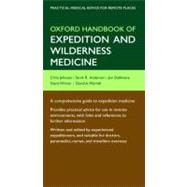
| Intro | |
| Introduction | |
| Types of adventurous journey | |
| Preparations | |
| Joining an expedition | |
| Role of expedition medical officer | |
| Human dynamics | |
| Preparations (risk and crisis management) | |
| Screening and special needs | |
| Immunisations | |
| Medical kits and pharmacopaeia | |
| Core skills and courses | |
| Legal liabilities | |
| Children in remote areas | |
| Fieldcraft | |
| Base layout | |
| Water supply and filtration | |
| Food and preparation | |
| Sanitation | |
| Personal hygiene | |
| Communications | |
| Telemedicine | |
| Crises | |
| Crisis management | |
| Evacuation | |
| Medical evacuation companies | |
| Death on expedition | |
| CommunicationsEmergency Care | |
| Emergencies - dealing with trauma | |
| Serious illness and collapse | |
| Specific emergencies | |
| Treatment | |
| Skin | |
| Head and neck | |
| Chest and thorax | |
| Abdomen | |
| Limbs and back | |
| Infectious disease | |
| Psychology and psychiatry | |
| Animals | |
| Plants and fungi | |
| Field anaesthesia | |
| Environments | |
| Polar - cold and dry | |
| Mountain | |
| Lakes, rivers and oceans | |
| Caving | |
| Deserts | |
| Tropical | |
| Table of Contents provided by Publisher. All Rights Reserved. |
The New copy of this book will include any supplemental materials advertised. Please check the title of the book to determine if it should include any access cards, study guides, lab manuals, CDs, etc.
The Used, Rental and eBook copies of this book are not guaranteed to include any supplemental materials. Typically, only the book itself is included. This is true even if the title states it includes any access cards, study guides, lab manuals, CDs, etc.